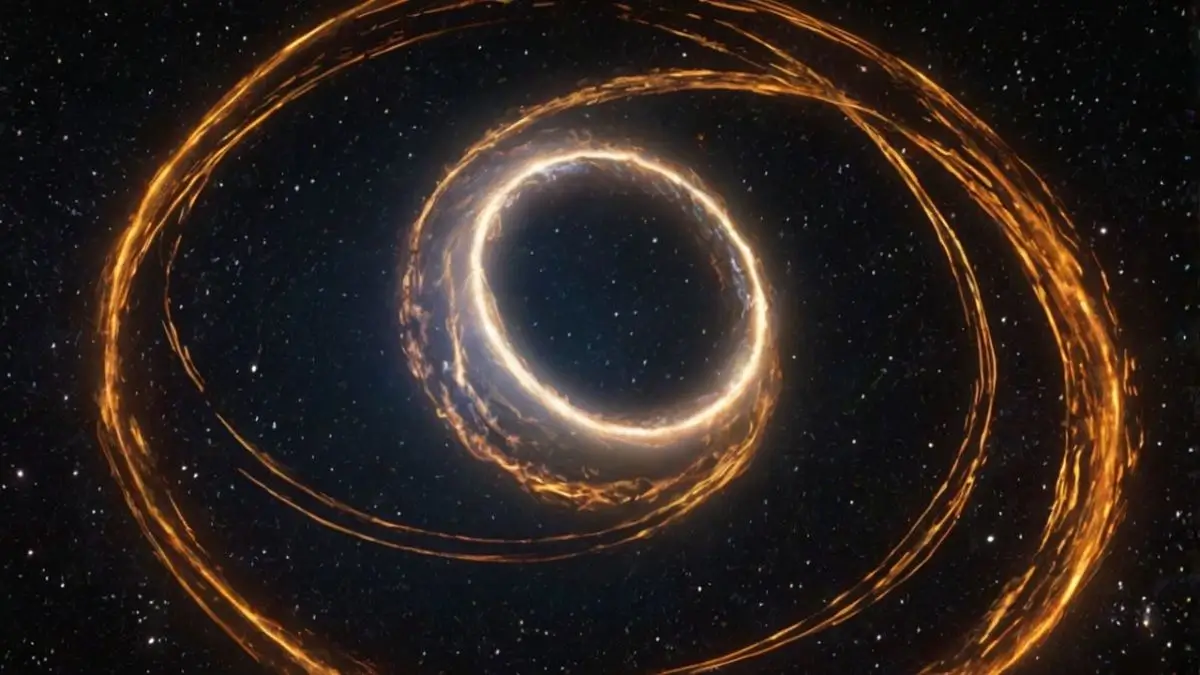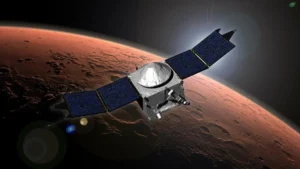The European Space Agency’s (ESA) Euclid telescope, launched on July 1, 2023, embarked on a six-year mission to explore the dark Universe. During an initial testing phase in September 2023, Euclid’s scientists unexpectedly discovered a rare and nearly perfect Einstein Ring within the galaxy NGC 6505, located 590 million light-years away. This luminous ring was formed by the gravitational lensing of light from a much more distant, yet unnamed, galaxy 4.42 billion light-years away. This discovery highlights Euclid’s immense capabilities in uncovering cosmic secrets and advancing our understanding of gravity, dark matter, and dark energy.
Key Highlights of Euclid’s Einstein Ring Discovery
1. Background of the Euclid Mission
- Launched on July 1, 2023, by the European Space Agency (ESA).
- Designed to map one-third of the sky, capturing billions of galaxies up to 10 billion light-years away.
- Aims to study dark matter, dark energy, and cosmic evolution.
- Euclid officially began its sky survey on February 14, 2024.
2. Discovery of the Einstein Ring
- The discovery was made during an initial testing phase in September 2023.
- Bruno Altieri, Euclid Archive Scientist, first noticed a hint of the rare lensing effect.
- Confirmed through further observations, leading to a high-resolution image of the Einstein Ring.
- The first time this ring had been detected despite the foreground galaxy NGC 6505 being known since 1884.
3. What is an Einstein Ring?
- A gravitational lensing effect predicted by Albert Einstein’s General Theory of Relativity.
- Occurs when a massive foreground galaxy bends the light from a distant background galaxy into a ring-like structure.
- Helps astronomers study the expansion of the Universe, dark matter, and dark energy.
4. Significance of the Einstein Ring Found by Euclid
- One of the most visually perfect Einstein Rings ever observed.
- The background galaxy lies 4.42 billion light-years away, much farther than the lensing galaxy NGC 6505 (590 million light-years away).
- Demonstrates Euclid’s exceptional observational power and ability to reveal hidden cosmic structures.
- Expected to contribute to a better understanding of gravitational lensing, dark matter, and cosmic structure formation.
5. Future Implications for Euclid’s Mission
- Scientists anticipate discovering around 100,000 strong gravitational lenses during the mission.
- Until now, fewer than 1,000 strong lenses had been identified.
- Euclid is set to revolutionize gravitational lensing studies and help construct the most comprehensive 3D map of the Universe.
| Summary/Static | Details |
| Why in the news? | Euclid Captures a Perfect Einstein Ring |
| Mission Name | Euclid Space Telescope Mission |
| Mission Duration | Six years |
| Launch Date | July 1, 2023 |
| Primary Goal | Study dark matter, dark energy, and cosmic evolution |
| Einstein Ring Location | NGC 6505 (590 million light-years away) |
| Background Galaxy Distance | 4.42 billion light-years away |
| Significance | One of the most visually perfect Einstein Rings observed |
| Total Expected Strong Lenses | 100,000 |
| Scientific Impact | Advances understanding of gravitational lensing, dark matter, and Universe expansion |



 NASA Loses Contact with MAVEN Spacecraft...
NASA Loses Contact with MAVEN Spacecraft...
 US FDA Qualifies First AI Tool to Accele...
US FDA Qualifies First AI Tool to Accele...
 11th India International Science Festiva...
11th India International Science Festiva...







